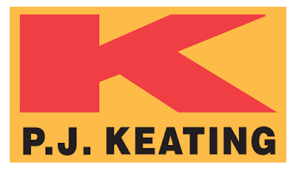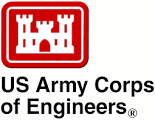News
EPA issues Superfund cleanup plan for East Waterway
May 29, 2024
Aggressive plan would cleanup over 120 acres of contaminated sediment
SEATTLE – Today, the Environmental Protection Agency finalized an aggressive $401 million plan to reduce the amount of pollution in Seattle’s East Waterway, one of two industrial channels of the Lower Duwamish River below the Spokane Street Bridge. The Port of Seattle, the City of Seattle, and King County will be responsible for conducting the cleanup.
East Waterway is one of seven sections, or “operable units,” of the larger Harbor Island Superfund Site which was placed on EPA’s National Priorities List in 1983 due to high levels of contaminants that accumulated over 150 years of urbanization and industrial development. These pollutants have contaminated the food web in Seattle’s only river, posing health risks to people who eat the local fish and shellfish. PCBs are the primary driver of risk to people who eat contaminated fish or shellfish, or who are exposed to contaminated sediment in the East Waterway.
The cleanup plan calls for aggressive efforts to reduce PCBs in East Waterway sediments to a level equivalent to “non-urban background” or two parts per billion, the same level the agency embraced for the cleanup of the Lower Duwamish Superfund Site. The average concentration of PCBs in East Waterway sediments is 460 parts per billion.
“Today’s action is a significant next step in removing PCBs and other legacy contaminants in the Duwamish River,” said Casey Sixkiller EPA Regional Administrator for the agency’s Pacific Northwest office in Seattle. “Our plan builds on years of studies of the East Waterway and community engagement, and furthers EPA’s commitment to applying the same aggressive cleanup goals in the East Waterway as we have in other parts of the river.”
“We appreciate EPA’s commitment to our community’s vision of a clean and healthy Green-Duwamish River,” said Laura Watson, director of the Washington Department of Ecology. “Removing these PCB-laden sediments will help protect the people and environment of the area. As we continue our work to reduce pollution sources both in the East Waterway and upstream, we look forward to seeing this sediment cleanup work begin.”
“We commend Regional Administrator Sixkiller and the EPA for demonstrating their commitment to environmental justice by acknowledging a ONE RIVER approach and releasing a health-protective plan created with robust community input,” said Paulina Lopez, Executive Director of Duwamish River Community Coalition. “This decision reflects years of the Duwamish community’s protests, campaigns, and public comments supporting a healthy Duwamish River. By centering the voices and priorities of those most impacted by pollution, we can achieve solutions that improve the environment for everybody — our Duwamish River is a River For All.”
The East Waterway cleanup plan consists of active cleanup of 120 acres of the mile-long waterway, prescribing removal of approximately 960,000 cubic yards of heavily contaminated sediment from 99 acres, on-site treatment of 12 acres under docks and piers, and capping an additional seven acres with clean material. A mix of other processes would be used to tackle the remaining acreage.
The cleanup plan complements other work in and around the Duwamish River, including by EPA, the Washington Department of Ecology, other state and local agencies, and industries to identify and reduce or eliminate the many sources of pollution that contaminate the river and Puget Sound. Each of these efforts is critical to achieving non-urban background levels of PCBs.
After the approximately 10 years of cleanup activities concludes, EPA will evaluate the effectiveness of the cleanup and source control work to determine what additional work, if any, is necessary to achieve cleanup goals. EPA will then begin a new process to develop a final cleanup plan, called a Record of Decision.
Until then, the cleanup plan released today is considered an Interim Record of Decision.
Following 10 years of active cleanup work and a period of extensive monitoring, the agency anticipates pollution levels in East Waterway sediments would be significantly reduced, thus decreasing contamination levels in fish and shellfish, and reducing risk for those who use the East Waterway for food and recreation, as well as for their livelihoods.
Contact: Bill Dunbar, 206-245-7452, [email protected]









































































































